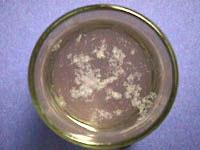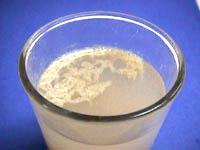Abstract
This experiment tested a number of aspects that arise from DNA extraction. It touches on plant cell DNA extraction, animal cell DNA extraction, sequence used in DNA extraction and composition of the sample. This leads us to the hypothesis of the experiment which states that “DNA yield is grossly affected by the sequence of extraction, DNA source components and tissue source.”
DNA isolation involves extraction of DNA from various sources (Albert et al 35). Little literature elaborates the differences between DNA extractions from different sources (Simon, Reece and Dickey 11). While researchers have suggested that plant cells produce more DNA than animal cells, others argue that DNA production differs with individual sources and not as plant or animal category (Albert et al 35). Additionally, it is important to note that research has indicated that DNA is only present in living organisms and can therefore not be found in non-living organism (Albert et al 35). Despite the fact that there exist various methods for extraction of DNA, ultimately they all bear similarity and perform similar steps (Keroin 20). Both aim at separation of DNA from other cellular components. Often presence of other substances like proteins, lipids, polysaccharides and other compounds are likely to interfere with the analysis methods used and are likely to interfere with DNA yield and purity. Likewise difference in composition of plant and animal cells is believed to have increased likelihood of affecting DNA yield and purity upon extraction (Lerner and Brenda 1).
DNA isolation usually starts with tissue/cell breakdown (lyses) (Anderson 2).This essentially involves protein structure destruction and facilitation of nucleic acids release. The process is often performed in a salt solution, comprising of protein denaturing detergents or proteases (Anderson 2). Cell membranes are dissolved and the cells broken down. Enzymes e.g. those found in meat tenderizer and pineapple juice facilitate protein precipitation and free DNA into the resulting solution (Anderson 2).
Materials and Methods
Materials used
For the success of this experiment, a number of materials were necessary. These include:
- Plant and animal tissues (onions, spinach leaf, liver and shrimp sample).
- Blender.
- Salt
- Soap/detergent.
- Water (warm).
- Sieve.
- Toothpicks
- Alcohol
Experimental Procedure
The following procedures were used in order to determine the response to our earlier stated hypothesis.
- A sample of onion is obtained from the larger tissue and cut into small pieces.
- The sample is placed in the blender.
- The blender is filled with warm salty water.
- The resulting contents are blended for approximately 10 seconds to allow partial liquefaction. The resulting mixture is poured into a clear glass via the sieve to approximately half-way.
- Stir the mixture gently adding between two to three tea spoons of soap. Caution should be taken in stirring not to produce soap bubbles
- Slowly add alcohol into the resulting mixture from glass side to allow it form a layer on top of the soapy mixture.
- Leave the mixture to rest for between 3-5 minutes while making observations.
- Repeat processes (i) to (vii) using liver sample, shrimp sample and spinach leaf.
- Repeat (viii) above sample using onions each time leaving out processes (iv, v and vi) respectively.
Results
In using the onion, the DNA slowly rises from the lower layer into the top alcohol layer. It looks stringy and has some small attached bubbles. Slowly twisting the substance into a toothpick allows better observation of the resulting DNA. The diagram below best illustrates the observed results.

Using the liver sample produces similar results though a slight difference in yields is observed as will be discussed later. This case is illustrated in the diagram below:

Using spinach leaf and shrimp sample yields similar results to those shown above. However the yield from shrimps is relatively low compared to the yields from liver. Repeating the other mentioned procedures mentioned in the methodology yields similar results though slight variations are recorded. When shrimp is used, the yield recorded is significantly lower as compared the yield in liver. Additionally, while liver yielded more DNA than the plant cells, shrimps yield was lower. Another observation made was that commission of one steps resulted into no/insignificant DNA yield for al the cases experimented on.
Discussion
The resulting observations show some level of consistency with my earlier stated hypothesis. Using detergents results into increased DNA yields compared to using soap. This is attributed to the detergents stronger ability to break the cell wall/cell membrane as compared to soaps. Extraction of DNA from animal cells varies depending on the source used as is witnessed in the case of liver and shrimp sample. It is also vital to note that experiment found out that each step is vital for success of this experiment. Omissions results into no or insignificant DNA yields. No clear trend to summarize the distinction in yield of plant and animal cell is recorded. To further explore this aspect is might be useful to conduct extensive research based on plant and animal samples subjected to similar conditions and procedures. Generally, though it may be concluded that the processes, sample sources and reagents used greatly affected the ultimate outcome of the experiment.
References
Alberts, Bruce. et al. Molecular Biology of the Cell. New York: Garland Science. 2002: 35.
Anderson, Jim. DNA extraction procedure. Journal of Forensic Science, 11(2), 2009:14 -19
Keroin, Anne. The Difference of the Genomic DNA Extraction between Animal & Plant. ehow contributor, 2007. Web.
Lerner, Lee and Brenda Wilmoth “DNA Isolation Methods.” World of Forensic Science. eNotes.com. 2006. Web.
Simon, Erick. Reece Janice and Dickey John. Essential biology. San Francisco : Pearson – Benjamin Cummings, , CA. (4th ed.), 2010.